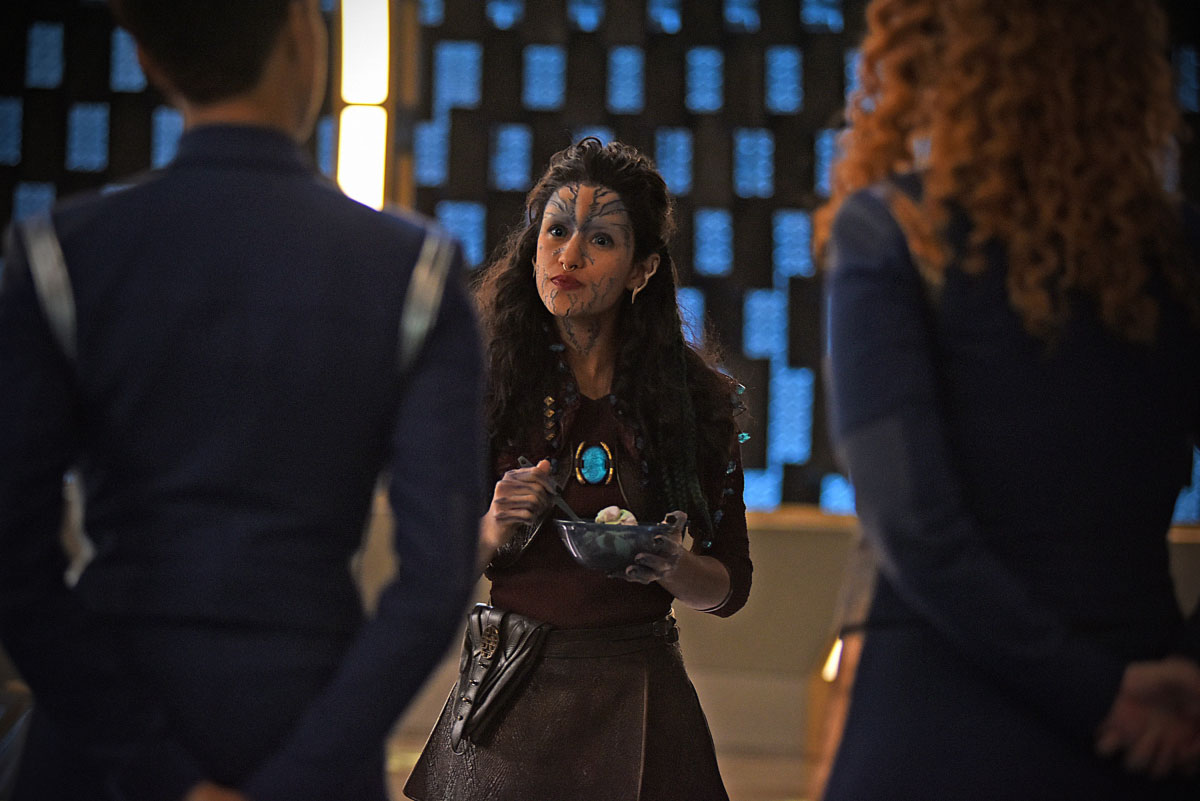The second and apparently final Star Trek novel of 2023 is Dayton Ward’s latest, Star Trek Discovery — Somewhere To Belong. Set in the months between the show’s third and fourth seasons, Ward’s newest Star Trek novel is a highly enjoyable trip down memory lane for the Discovery crew that makes good use of both Discovery’s original 23rd century setting, and its adopted 32nd century galaxy of the future.
The remainder of this review contains light spoilers for the plot of “Somewhere To Belong.”
Somewhere To Belong fills in a few of the gaps following Season 3’s story, after the Discovery crew solves the mystery of The Burn and the Federation begins to reestablish contact with many of its former members — but before the emergence of the DMA that kicked off the events of season four. We find the Discovery carrying out the mission it was tasked in the final seconds of Season 3, leading the Federation’s efforts to get reacquainted with the rest of the galaxy.
Tie-in novels to television shows that are largely serialized can be hugely beneficial for establishing character or exploring themes or ideas from the show that the show itself did not have time for in servicing its larger plot lines. And Somewhere To Belong serves that role well, providing for a much deeper examination for the whole crew of the implications of their millennia hopping time travel than we were able to see during the show itself.

The book does an excellent job of revisiting Discovery’s own history and taking maximum advantage of the show’s unique presence in two completely different parts of Star Trek history. As the ship and crew continue to orient themselves to the 32nd century, they encounter a race they have important history with.
That race is the Xaheans — who first appeared in the “Runaway” Short Trek, with their return in “Such Sweet Sorrow” season-ender. In those episodes, Sylvia Tilly formed a close bond with Po, a Xahean destined for the throne of her world, a planet that was rich in dilithium — a mineral that the Xahean people had a special bond with.
Now in the 32nd century, Discovery again encounters the Xahean people, finding that time has not been good to them. Ward tells us the history of the Xaheans after Discovery left the 23rd century, and many of the events of subsequent years that we know about from other Star Trek shows swept in the race and have left them in a dire place.
Somewhere To Belong is a story about grief, loss, and regret. And yet despite those themes, it’s actually not that much of a downer, and serves as a hopeful tale about how even the most challenging circumstances can result in hope and progress. The novel does not shy away from some of the hardships that many in the galaxy have faced in the years that Discovery was a way, but also shows that the sins of the past can be addressed if they are properly acknowledged.

Using the Xaheans allows for Ward’s story to draw from the show’s history both before and after time travel, and serves as a good accompanying narrative for sections of the book that give characters a chance to breathe and reflect upon the big changes to their lives brought on by the time jump to the future and the rollercoaster of events that followed. The book uses Hugh Culber as a through line character for that examination, in a way that mirrors the show’s own use of Culber in Seasons 3 and 4.
Somewhere To Belong also allows some space for a few leftover story threads from season three to be addressed that were not really examined in Season 4; namely the animosity that was created between Paul Stamets and Captain Michael Burnham in the wake of “That Hope Is You, Part 2.” Ward provides some story space to address this, and why it all seems to be water under the bridge by the beginning of Season 4.
Ward also does a really nice job of world building — not just for the Xaheans, who get a deeper examination than they did in season of Discovery, but also in terms of continuing to build out the 32nd century. The book is careful not to stray too far outside the lines of what Discovery has already established, given the possibility the show might contradict later details with its upcoming fifth and final season, but Ward does a nice job of connecting the 32nd century with earlier eras of Star Trek.
It helps make this era feel more connected to the wider Star Trek universe than the show has managed to date, and is a credit to Ward’s writing.

Overall, Somewhere To Belong is an enjoyable read, that lives nicely within the Discovery style and explores more of some of the show’s themes and stories in a way that feels additive to your enjoyment of the show as a whole.
* * *
While there’s another Star Trek: Prodigy young-reader tale coming in August — Cassandra Rose Clarke’s Escape Route — it’s just a shame that we’ll have to wait another nine months for the next mainline Star Trek novel: David Mack’s Star Trek: Picard — Firewall, telling the story of Seven of Nine’s journey from the USS Voyager to the Fenris Rangers.
Hopefully there will be more than just two or three entries into the literary Star Trek library in 2024.
![]()
Star Trek: Discovery — Somewhere To Belong is in stores now.
